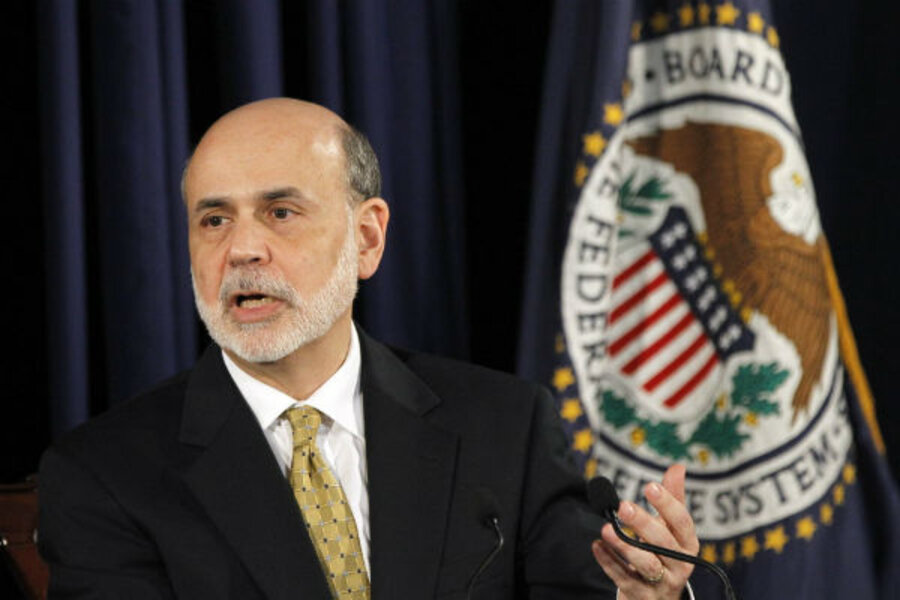Given political restraints, the Fed has little actual power
Loading...
A number of people, mostly on the left, but also some right of centre economists or pundits like Scott Sumner, Steve Chapman and Ramesh Ponnuru are dissatisfied that the Fed isn't doing more to inflate. For the moment, I'll ignore the issue of whether it would be desirable if it was feasible (I think long time readers can guess what my view on that subject is), and instead focus on the issue of whether it is feasible.
The short answer is that using its current methods it's not feasible to any significant extent, and only using methods that are impossible because of political restraints would it be feasible. The irrational status of U.S. treasury securities as "safe havens" have in fact pushed down yields so low at the moment, with the 10-year yield being only 1.67%, that further "quantitative easing" or "operation twist" have only very little room to push down yields further. And considering how the several percentage point drop in interest rates so far have had only very little effect, there is little reason to believe that even another full percentage point would have any significant effect. When people are optimistic, a percentage point change can have great effect, but when people are pessimistic as they are now it will only have very little effect.
Some of the above mentioned people have asserted that by merely stating as a formal target that it wants to achieve nominal GDP growth of 4 or 5%, or raising the inflation target to 3 or 4% this will get the job done without any purchases or twists because investors, as well as corporate decision makers and consumers, know better than to fight the Fed and this behavioral change will cause the target to be achieve, sort of like how guards in a labor camp can get inmates to work by threatening to shoot those who don't, a threat that makes everyone work even though no one has been actually shot. If it makes investors, corporate decision makers and consumers more optimistic it could indeed work.
However, this presupposes that everyone actually believes that the Fed has the power to enforce it in case people are unwilling to go along, and as was concluded above, it really doesn't have that power. And as most people probably realize it, the Fed's threat would be as powerless as the threats by a prison guard to shoot inmates when the prisoners are aware that he has run out of ammo.
This doesn't mean that it is impossible to achieve a significant increase in inflation if one is capable and willing to use what one might call unorthodox methods. I myself have previously suggested legalizing counterfeiting, and when thinking about it I can now come up with various other schemes that would achieve a lot more inflation, like large scale purchases of stocks, printing (or electronically generating) massive amounts of money and simply giving it away to people and buying large quantities of for example Spanish and Italian bonds.
Why legalizing counterfeiting is politically impossible should be obvious. Large scale purchases of stocks is politically impossible because it would mean government ownership of the means of production...well, I think that is sufficient explanation of why it wouldn't be accepted by Congress. Simply giving away newly printed or electronically generated money would in effect be the same as a fiscal "stimulus", which won't be accepted in Congress. And buying bonds from Italy, Spain and other troubled European countries, which would first of all directly lower the dollar's exchange rate and secondly ease the market anxiety that causes the "safe haven" demand for U.S. treasuries that makes conventional quantitative easing ineffective, would be viewed as "bailing out Europe" and would therefore also be rejected.
So, unless someone can come up with a more clever scheme that would be effective while not being politically controversial, the Fed lacks the power to generate the kind of extra monetary inflation that the above mentioned people calls for.






